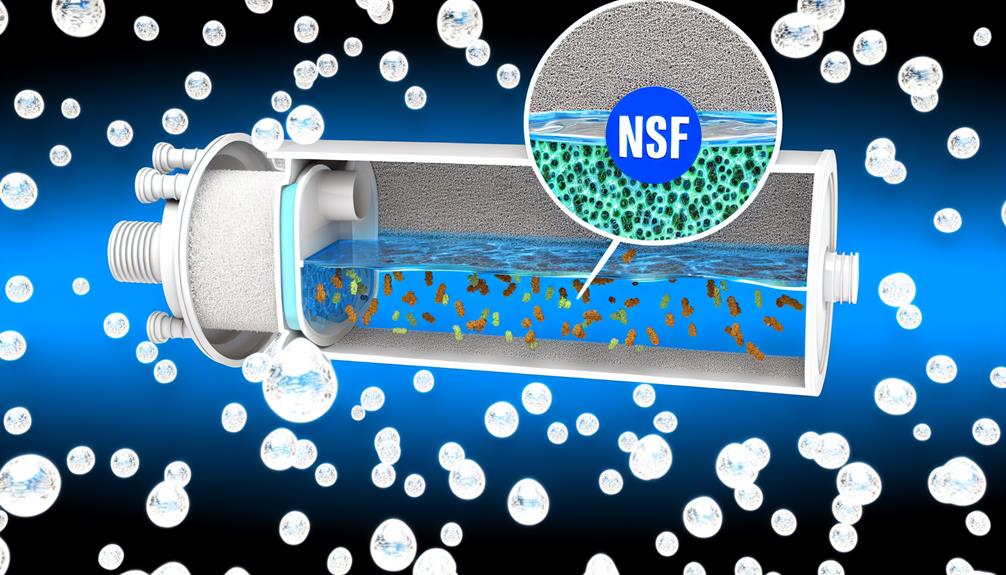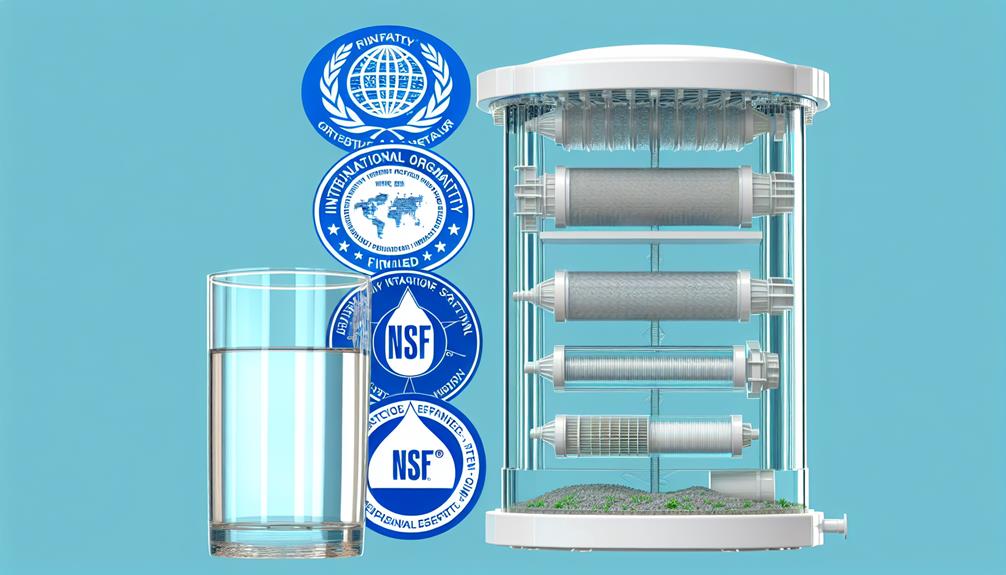You might think that adhering to ISO standards for water filter systems is a straightforward process, but it's more nuanced than simply following a set of rules. As a professional in the field, you understand that these standards, such as ISO 7704:2023, are not just about ticking boxes; they are about ensuring the safety, reliability, and efficacy of water filtration technology.
By aligning with these regulations, you're not only guaranteeing compliance but also committing to a higher standard of public health protection. This intricate dance between manufacturers and standards can be challenging, yet it's crucial for maintaining consumer trust and market credibility.
Now, consider the implications of falling short in this area and the potential innovations that compliance can drive forward. What's at stake, you ask? Let's just say, it's more than just clean water flowing through the pipes.
Overview of ISO Water Standards
Understanding the ISO water standards is crucial, as they provide benchmarks for the efficacy and safety of water filtration systems globally. These International Standards are meticulously crafted to ensure that the filtration methods used to purify drinking water are held to the highest performance measures. Access to the most current ISO standards is facilitated by the Online Browsing Platform (OBP), which offers a user-friendly interface for previewing and searching documents, and navigating between related standards with ease.
Specifically, ISO 7704:2023 sets out stringent requirements for the performance testing of membrane filters. This is particularly relevant for assessing their capability to retain and enumerate microorganisms through culture methods. It's a standard that both membrane filter manufacturers and microbiological laboratories need to adhere to for quality assurance.
ISO 22519, on the other hand, is a noteworthy new addition to the International Standards, offering comprehensive guidance on the specifications for pretreatment and purification systems in the production of pharmaceutical water. It includes precise terms and definitions, ensuring a shared understanding among professionals in the field. The focus on removing impurities, such as calcium and magnesium ions, underscores the importance of specificity and attention to detail in maintaining the integrity of water filtration systems.
Certification Process Explained
To ensure your water filtration system meets the highest standards of quality and safety, it must undergo a rigorous certification process aligned with ISO requirements. This involves a series of detailed steps designed to verify compliance with the specific content in ISO standards.
Here's what you need to know about this process:
- Documentation Review: Initially, your system's technical documents are scrutinized to confirm that the design and manufacturing processes align with the relevant ISO standards. This includes evaluating materials, components, and the overall functionality against prescribed benchmarks.
- Testing and Inspection: Next, your product is subjected to extensive testing to assess its performance and safety. Inspections are carried out to ensure that every aspect of the water filter system, from the efficacy of filtration to the structural integrity, complies with the stringent criteria set out by ISO.
- Certification Issuance: Upon successful verification and testing, a certificate of compliance is issued. This document serves as formal recognition that your water filter system adheres to the high standards of quality and safety mandated by ISO.
It's crucial to understand that this certification process isn't a one-time event. Regular audits are conducted to ensure continued adherence to ISO standards, keeping your product's certification valid and up-to-date.
Key ISO Standards for Filters
Navigating the complex landscape of ISO standards, you'll find specific benchmarks such as ISO 7704:2023, which sets rigorous requirements for the performance of membrane filters in microbiological analysis. This standard is crucial for ensuring the reliability of filters in the retention and enumeration of microorganisms, which is paramount for various types of water, including drinking and bottled water. As you review the content of ISO 7704:2023, you'll see it's meticulously crafted to serve as a definitive guide for water quality assurance.
In the realm of water filtration, NSF/ANSI 42 and NSF/ANSI 53 standards are also pivotal. These aren't ISO standards, but they're recognized for their effectiveness in reducing aesthetic impurities such as chlorine, taste, and odor, pertinent to both point-of-use and point-of-entry treatment systems. These certifications are a testament to a filter's quality and performance.
ISO 22519 emerges as an innovative standard, specifically tailoring the pretreatment and production of purified water and water for injection in the pharmaceutical sector. However, its content raises technical queries, as the mandate for escalating quality parameters after each treatment step may not align with current industry practices. When interpreting these standards, preview content and graphical symbols offer a clear, concise representation of compliance requirements, ensuring you can analyze and apply these benchmarks with precision.
Compliance Benefits and Challenges
Aligning your water filter system with ISO standards can elevate the credibility of your product, yet it often involves a complex maze of regulatory hurdles and exacting specifications to navigate. When you commit to standards compliance, you're not just ensuring product safety and reliability; you're also positioning your brand as a market leader. However, staying up-to-date with the ISO's evolving criteria demands a meticulous approach.
The benefits of ISO compliance for water filter systems are clear:
- Enhanced Trust: By meeting internationally recognized standards, you assure customers of your product's quality and safety.
- Market Access: Compliance often serves as a passport to global markets, where regulations might otherwise limit entry.
- Competitive Edge: Adherence to the latest standards can set you apart, showcasing your commitment to excellence and innovation.
But these perks come with their own set of challenges:
- Keeping Pace: ISO standards evolve, and the date content in ISO documents can change. You must stay vigilant to ensure ongoing compliance.
- Resource Allocation: Achieving and maintaining ISO compliance requires investing time, manpower, and capital.
- Complex Documentation: The process demands thorough documentation, from system audits to quality management records, which can be a daunting administrative task.
Navigating these challenges requires a strategic, well-informed approach to reap the full benefits of ISO compliance.
Maintaining ISO Certification
While securing ISO certification is an achievement, ensuring its maintenance demands consistent attention to evolving standards and rigorous process management. You must stay abreast of the latest ISO standards to ensure your water filter systems remain compliant. This involves regularly reviewing and updating your internal processes to align with the current terms of ISO requirements.
To keep your ISO standards compliance on track, implement a robust system for documenting and tracking all compliance activities. This documentation serves as evidence of your ongoing commitment to maintaining ISO certification and is vital during audits. It's also essential to train your employees thoroughly on ISO standards and the critical role they play in maintaining certification. They should understand the procedures and the importance of adhering to them.
Furthermore, to verify that your water filter systems are consistently meeting ISO standards, regularly conduct internal audits. These audits allow you to monitor your compliance status and identify areas for improvement. They're an analytical tool that not only helps in maintaining ISO certification but also in enhancing the overall performance and reliability of your water filter systems.

